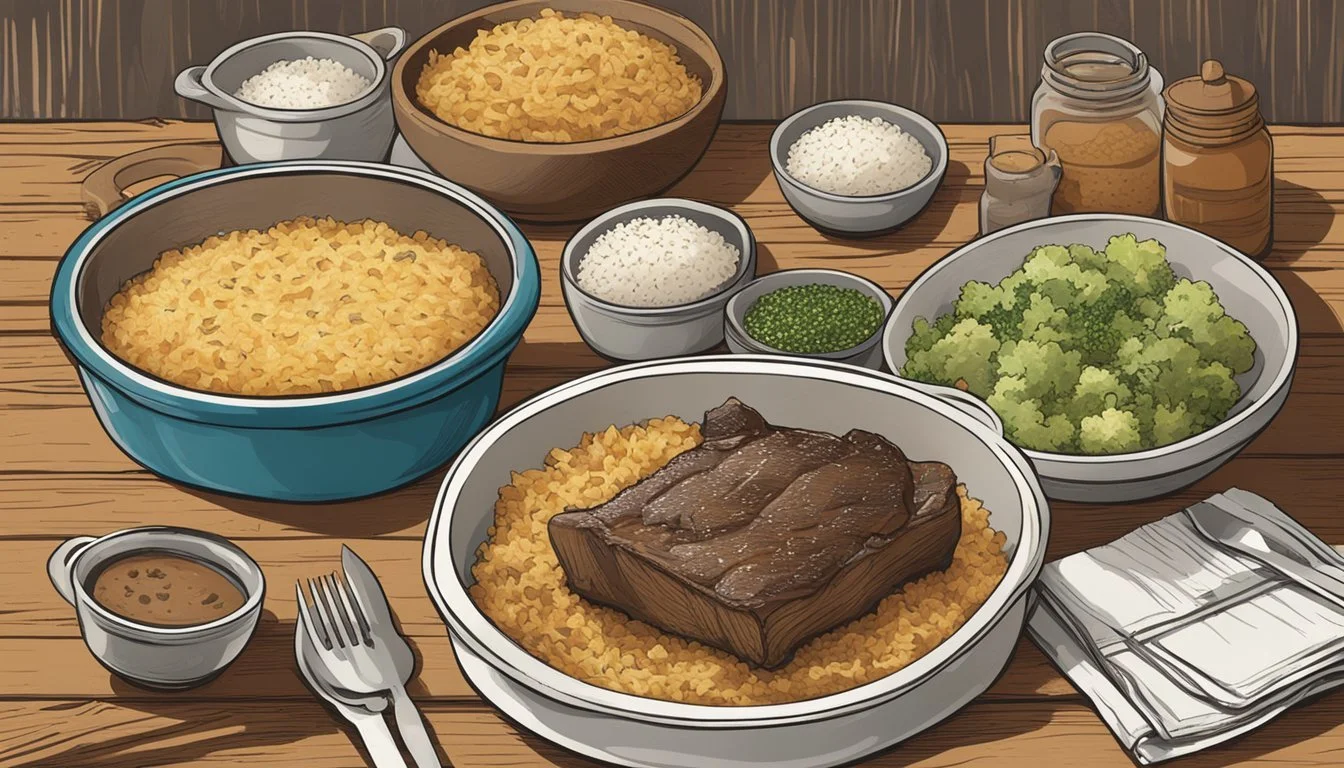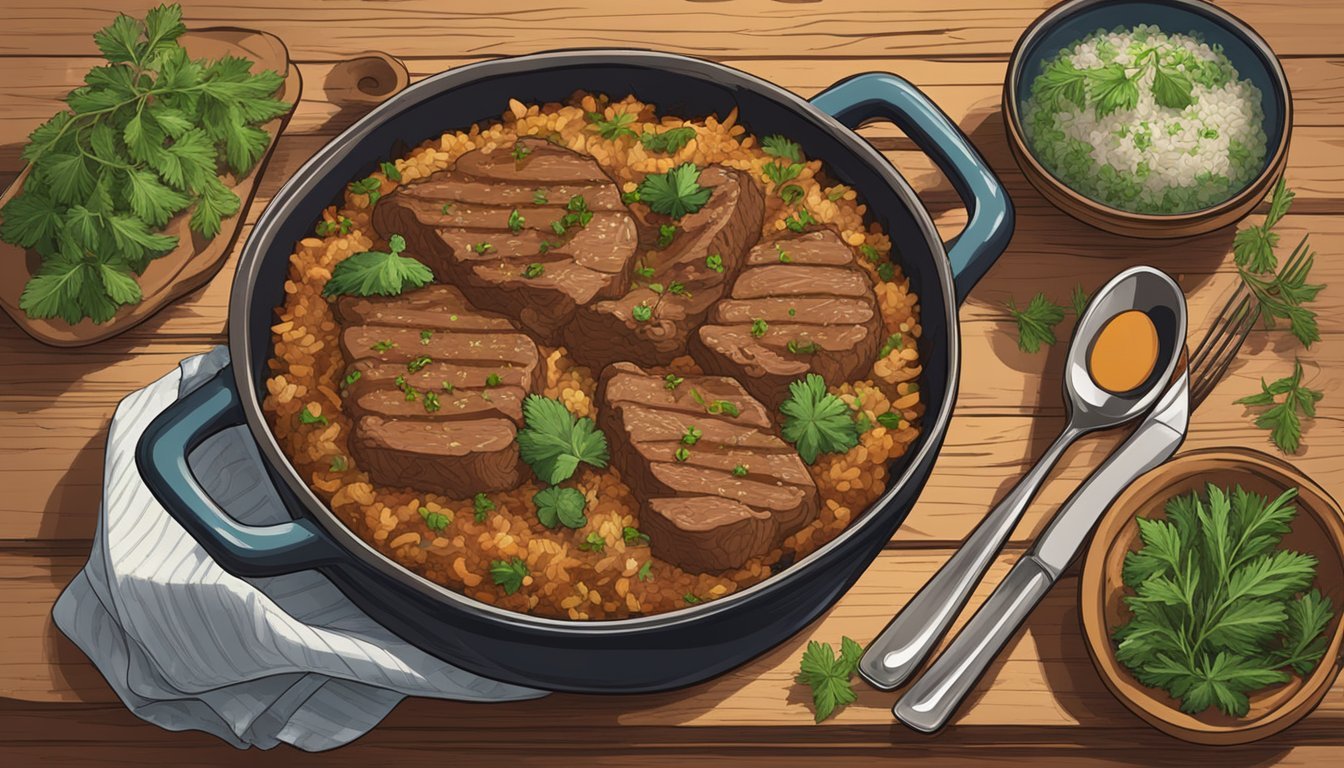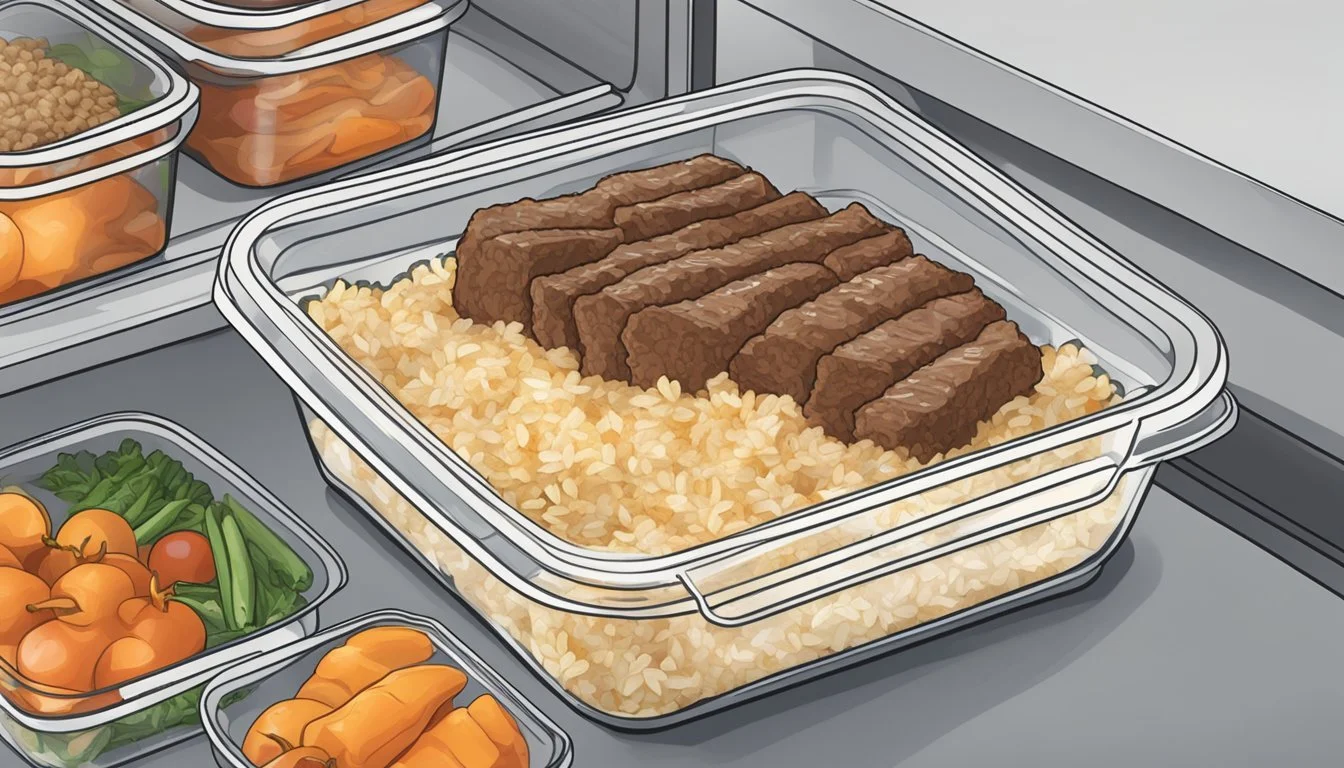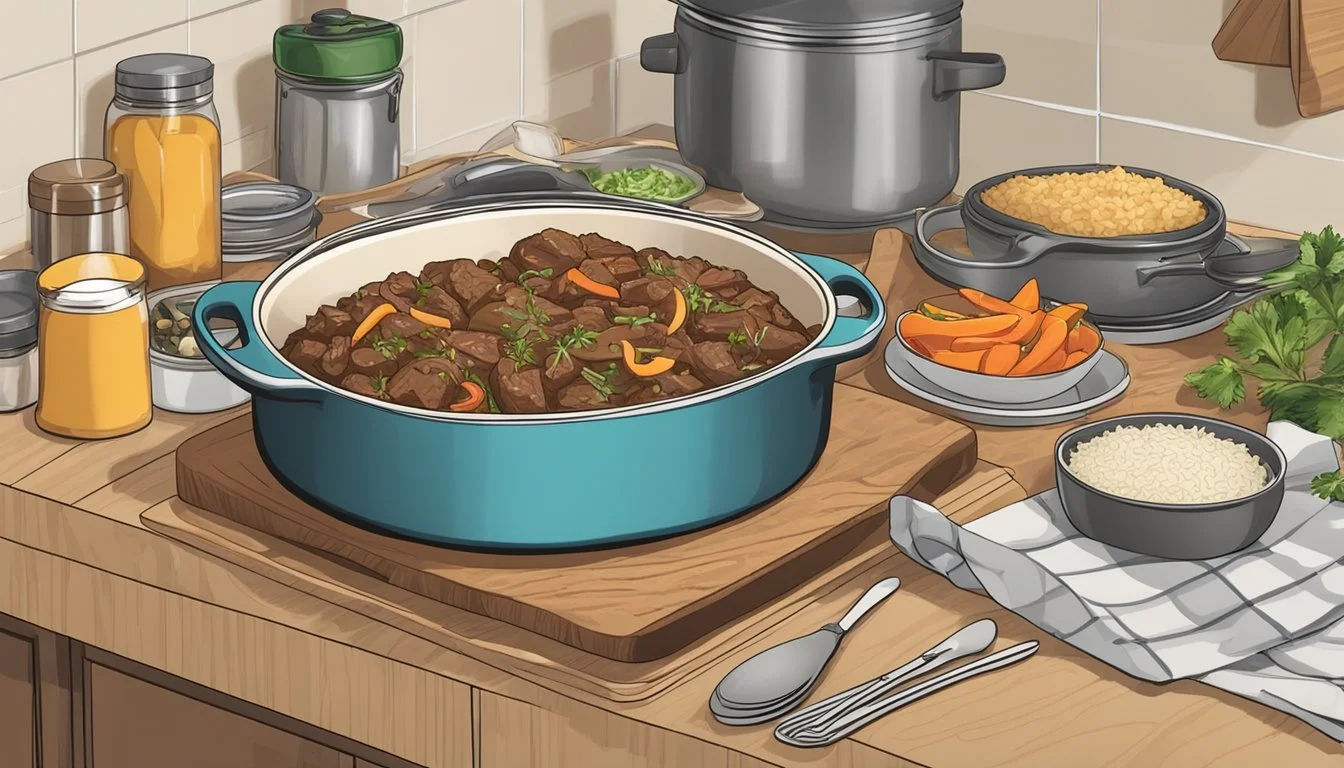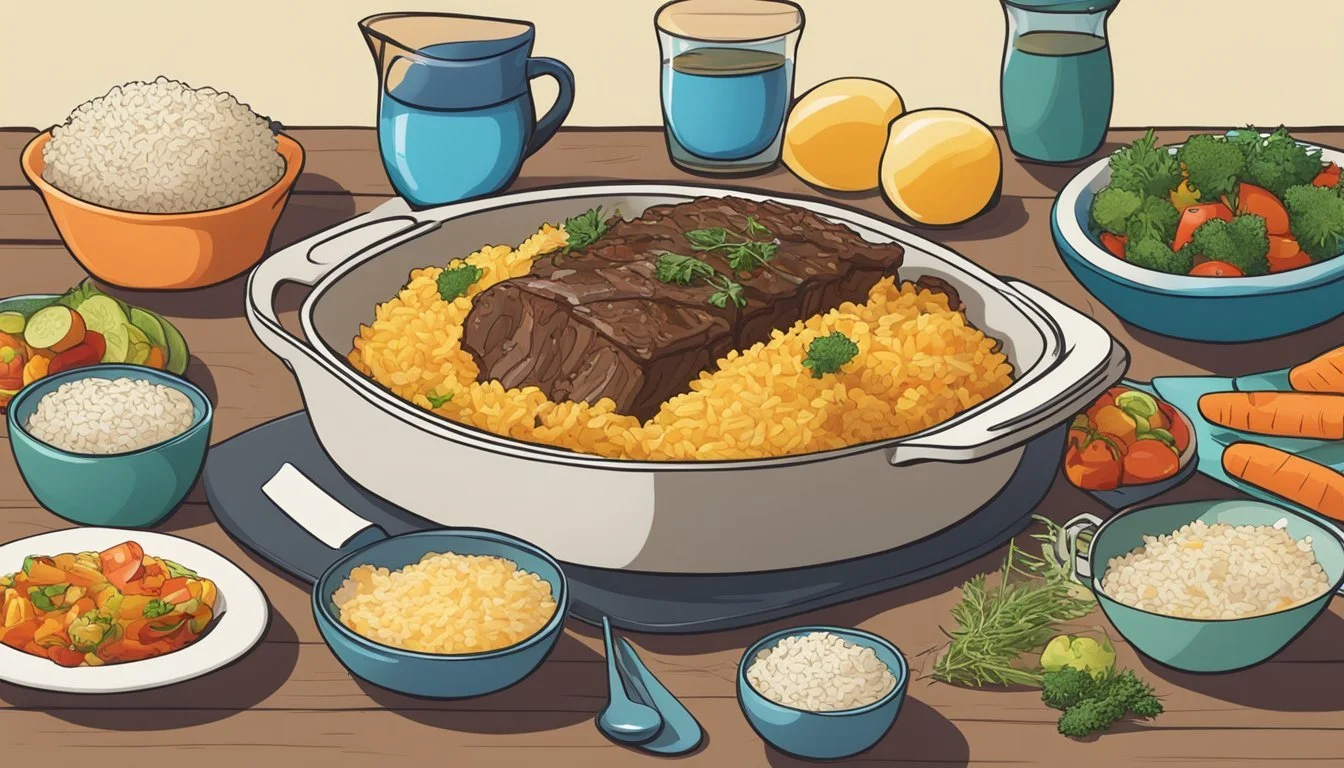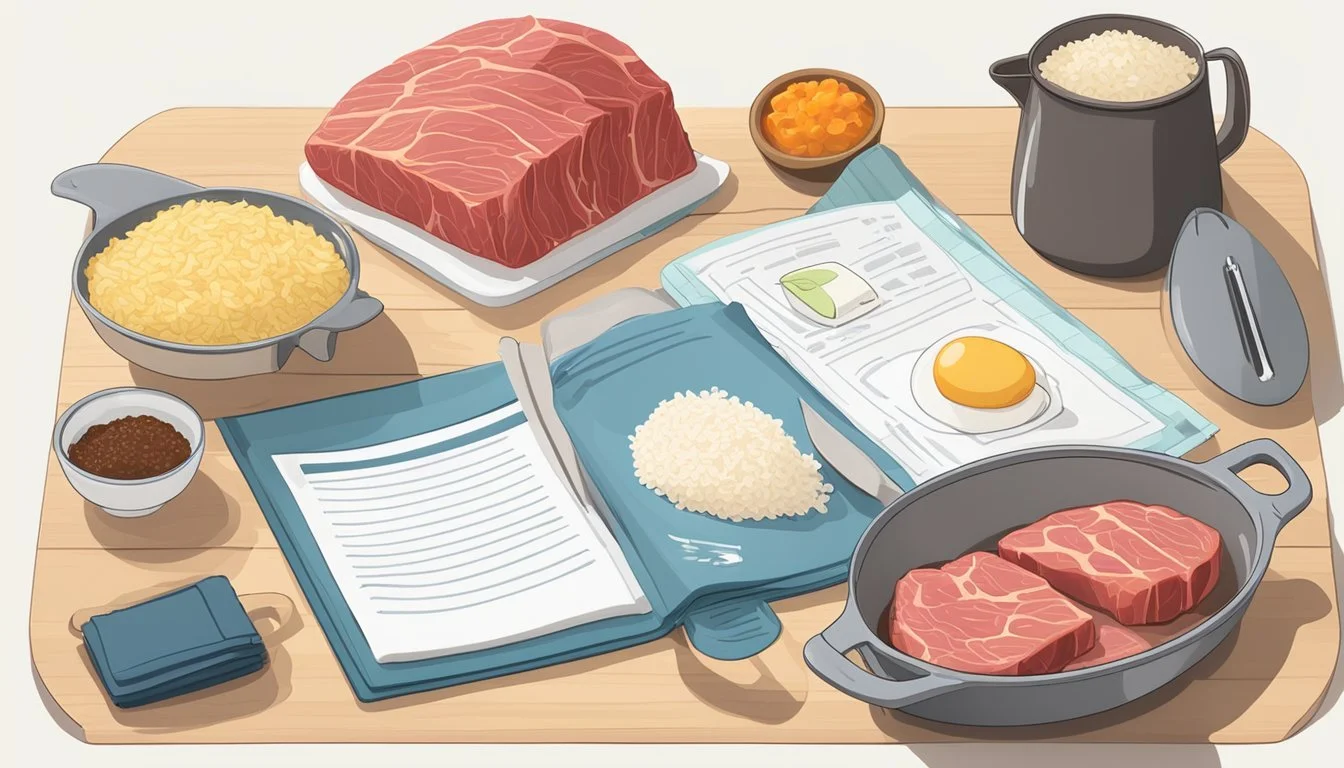How Long Does Beef and Rice Casserole Last?
Storage Tips
Beef and rice casserole is a classic comfort food that many people enjoy for its hearty and satisfying flavors. It's a go-to dish for busy weeknights, gathering with friends, or even potluck events. As delicious as it is, this dish typically lasts for about 3 to 4 days in the refrigerator if stored correctly in an airtight container.
For those who love meal prepping, beef and rice casserole can also be frozen for longer storage. When stored in the freezer, it can last for up to 2 to 3 months without losing its quality. Just ensure it's tightly wrapped or placed in a freezer-safe container to avoid freezer burn.
Knowing how long beef and rice casserole lasts can help you manage your meals better and reduce food waste. Whether you make it ahead for the week or freeze portions for later, this versatile dish fits seamlessly into your meal planning strategy.
Ingredients and Variations
Ground Beef: This is the core ingredient in most beef and rice casseroles. For a healthier option, use lean ground beef.
Rice: Long grain rice is often used. Brown rice can be an alternative for more fiber and nutrients.
Cheese: Cheddar cheese is common, but you can also use Monterey Jack or mozzarella cheese for different flavors.
Seasonings: Standard choices include salt, pepper, and garlic. Adding Italian seasoning, basil, or rosemary can elevate the dish.
Onions and Peppers: Typically, onions are sautéed with the ground beef. Peppers can add color and crunch.
Cream of Mushroom Soup: This ingredient adds a creamy texture. Alternatives include cream of chicken or cream of celery soup.
Veggies: Diced tomatoes, corn, carrots, and spinach are great additions for added nutrients and texture.
Milk and Sour Cream: These ingredients add creaminess and depth. For a tangy twist, include cream cheese.
Broth: Beef broth or vegetable broth keeps the casserole moist and flavorful. Chicken broth works well too.
Additional Variations:
For a Mexican twist, use taco seasoning, salsa, and cilantro.
Ground turkey or ground chicken can replace beef for a different flavor profile.
For a unique mix, try a pizza-flavored casserole with Italian seasonings and spinach.
To mix it up, consider chicken and broccoli or chicken cordon bleu variations.
This diverse list of ingredients and variations ensures that there is something for everyone's taste preferences.
Preparation Guidelines
Properly preparing a beef and rice casserole involves several steps to ensure a flavorful and thoroughly cooked dish. Each phase from cooking the ingredients to layering and baking is crucial to achieving the best results.
Cooking Instructions
Start by browning the ground beef in a large skillet over medium heat. Enhance the flavor by adding garlic, salt, and pepper. Drain any excess fat to keep the dish from becoming oily.
For added taste, include chopped onions and bell peppers, cooking until softened. Instead of regular rice, using minute rice can save time without compromising texture. Combining the beef with minute rice and ensuring all components are evenly mixed prepares the filling for the casserole.
Layering the Casserole
Layering the casserole correctly ensures an even distribution of ingredients and flavors. Begin by spraying the casserole dish with non-stick cooking spray. Spread an initial layer of cooked rice across the bottom.
Next, evenly distribute the cooked beef and vegetable mixture over the rice. Repeat these layers if necessary, depending on the dish's depth. Top the layers with a generous amount of shredded cheese or a cream-based sauce, as these add both moisture and a creamy texture to the casserole.
Baking Process
Preheat the oven to 375°F (190°C). Cover the casserole dish with aluminum foil to prevent the top from burning and to retain moisture. Place it in the preheated oven and bake for about 25-30 minutes.
Remove the foil and continue baking for another 10-15 minutes or until the top is golden brown and bubbly. Using a slow cooker as an alternative method means setting it to low heat for 4-6 hours, providing convenience if time is not a constraint.
Proper Storage and Shelf Life
When storing a beef and rice casserole, it's crucial to prioritize food safety. Leftovers should be placed in the refrigerator within 2 hours of cooking to minimize the growth of harmful bacteria.
Store the casserole in airtight containers to maintain its freshness and prevent contamination.
Refrigerator Storage:
Cooked Beef and Rice Casserole: 3-4 days at 40°F (4.4°C)
Freezer Storage:
Cooked Beef and Rice Casserole: Up to 3 months at 0°F (-18°C)
For a freezer meal, portion the casserole into individual servings before freezing. This helps in reheating only what is needed and maintains the quality of the remaining portions.
It's advisable to use containers designed for freezing to prevent freezer burn.
Low sodium variations of the casserole can also be stored using the same guidelines. Always ensure to label containers with the date of preparation to keep track of its shelf life.
Reheating Instructions
To reheat a beef and rice casserole, there are a couple of methods you can use: oven and microwave. Each method has its own steps to ensure the casserole is warmed through without drying out.
For the oven:
Preheat the oven to 350°F.
Cover the casserole with foil to retain moisture. A moist paper towel can also be added under the foil.
Bake for 20-30 minutes or until the internal temperature reaches 165°F.
Check with an instant-read thermometer for safety.
For the microwave:
Place a portion of the casserole on a microwave-safe plate.
Cover with a microwave-safe lid or plate to trap moisture.
Heat on medium power (50%) for 2-3 minutes.
Stir halfway through to promote even heating.
Check that it reaches an internal temperature of 165°F before eating.
Reheating the casserole by either method ensures it retains its flavor and texture. Use these steps to avoid overcooking or drying out the dish.
Health and Dietary Considerations
When considering health and dietary needs, it’s important to note that beef and rice casserole can be modified to suit various dietary restrictions.
For those requiring gluten-free options, ensure all ingredients are free from gluten. Use gluten-free soups and seasonings.
Dairy-free variations can be made by replacing cheese and milk with non-dairy alternatives, such as plant-based milk and vegan cheese.
Beef offers a good protein source but can be high in saturated fats. Opt for lean ground beef or substitute with ground turkey for a healthier alternative.
Adding vegetables like peppers, onions, and tomatoes increases the nutritional value by providing vitamins and fiber.
Those watching sodium intake should choose low-sodium soups and seasoning options.
Nutritional Content:
Protein: Beef
Carbohydrates: Rice
Vitamins and Minerals: Vegetables
Fats: Cheese and cream soups
Lastly, portion control is key for maintaining a balanced diet, as casseroles can be calorie-dense.
Always consult with a dietitian or healthcare provider to ensure that modifications align with personal health requirements.
Serving Suggestions
For a satisfying meal, serve the beef and rice casserole hot and fresh from the oven. The flavors and textures are at their peak when it's just been baked.
Serve the casserole with a side of garlic bread. The crisp and buttery texture of the bread complements the hearty casserole.
A side salad can add a refreshing and crunchy element to your meal. Consider a simple green salad with a light vinaigrette to balance the rich flavors of the casserole.
Mashed potatoes can be another delightful accompaniment. Their creamy texture contrasts nicely with the beef and rice, providing a comforting addition to the plate.
For a more unique twist, try serving the casserole with a side of fried rice. The additional flavors and textures can create an interesting combination for those who enjoy variety.
These suggestions enhance the dining experience, making your beef and rice casserole the centerpiece of a delicious and well-rounded meal.
Use garnishes like fresh herbs or a sprinkle of cheese to elevate the presentation and taste.
Recipe Variations and Substitutions
There are numerous ways to customize a beef and rice casserole to better suit dietary preferences or ingredient availability. Popular adjustments include using different proteins, creating vegetarian options, and substituting rice with other grains or pasta.
Alternative Proteins
For a twist on the classic ground beef casserole, consider ground turkey, chicken, or pork. These proteins offer a lighter taste while maintaining the dish's hearty nature.
Another option is to use shredded rotisserie chicken for added convenience and flavor. For those seeking adventure, chorizo adds a spicy kick.
Cooks may also opt for ground lamb for a rich, distinct flavor. Regardless of the choice, the key is to brown and fully cook the protein before adding it to the casserole.
Vegetarian Options
To create a vegetarian version, omit the meat and boost the vegetable content. Use a mix of beans, such as black beans, pinto beans, or chickpeas, as replacements for the protein.
Tofu or tempeh can also be cubed and browned before being mixed into the casserole.
Increase the amounts of bell peppers, onions, corn, and tomatoes for extra flavor and nutrition. Mushrooms provide a meaty texture, making them an excellent substitute. Make sure to season the vegetables well to balance the absence of meat.
Rice Alternatives
For those looking to vary the grain, substitute white rice with other options like brown rice for a nuttier flavor and more fiber. Quinoa is another excellent choice, adding a unique texture and higher protein content.
Cauliflower rice can be used for a low-carb version, though it should be added later in the cooking process to avoid overcooking.
Other grains such as barley, farro, or bulgur can also be utilized. Adjust cooking times accordingly to ensure the grains are tender but not overcooked.
Tips for Enhancing Flavor
To make a cheesy ground beef and rice casserole even more delicious, try adding some taco seasoning to the beef as it browns. This adds a bold, savory flair.
Incorporating salsa into the mixture can add a tangy and slightly spicy element. Use your favorite brand to personalize the flavor.
Guacamole pairs wonderfully with cheesy beef and rice casseroles. Serve a dollop on the side or mix it in just before baking for creamy richness.
Fresh herbs like cilantro or parsley sprinkled on top before serving can add a fresh, vibrant touch to balance the richness of the dish.
Experiment with different cheeses. A combination of sharp cheddar and mozzarella can offer depth and a delightful gooey texture.
Lastly, adding a layer of crushed tortilla chips on top before baking can provide a satisfying crunch and an extra burst of flavor.
Making the Casserole Budget-Friendly
Creating a beef and rice casserole on a budget is manageable and satisfying. Here are some tips to keep costs low while maintaining flavor and nutrition.
Choose Affordable Ingredients: Opt for ground beef on sale or buy in bulk. Replace fresh vegetables with frozen options, as they are often cheaper and have a long shelf life.
Utilize Pantry Staples: Basic ingredients like rice, canned tomatoes, and broth are cost-effective and likely already in the pantry. This strategy reduces the need for additional grocery trips.
Buy Store Brands: Store brands often cost less than name brands and offer similar quality. This simple switch can save a significant amount over time.
Substitute Wisely: If the recipe calls for sour cream or cream soup, consider using low-cost, homemade alternatives. For instance, a basic white sauce can replace canned cream soups effectively.
Limit Meat Quantity: Stretch the beef by adding more vegetables or beans. This not only lowers costs but also boosts the nutritional value.
Energy Efficient Cooking: Cook larger portions to make the best use of oven energy, and freeze leftovers for future meals.
Ingredient Approximate Cost Economical Alternatives Ground Beef $4.00/lb Ground turkey, beans Rice $0.70/lb Bulk purchase, store brand Veggies $2.00 Frozen options, seasonal produce Broth $1.50 Homemade stock, bouillon Canned Tomatoes $1.00 Bulk purchase, store brand
Using these methods, he or she can make a delicious and cost-effective beef and rice casserole that doesn't break the bank.
Freezing and Making Ahead
Freezing beef and rice casserole is a practical way to create a convenient freezer meal. To freeze, first allow the cooked casserole to cool to room temperature.
Using aluminum foil or parchment paper, line the baking dish, leaving extra flaps for easy lifting. Freeze the casserole until solid, usually 24-36 hours. This ensures the casserole keeps its shape.
Once frozen, lift the casserole out using the foil or parchment paper flaps. Wrap it tightly with plastic wrap or foil. Label the package with the date to keep track.
When you're ready to bake, remove the casserole from the freezer and transfer it to the refrigerator. Allow it to thaw for 24-36 hours. Baking it from cold ensures even cooking.
During the thawing process, keep the casserole covered to retain moisture. Bake as instructed in your recipe, usually until the internal temperature reaches a safe level (165°F or 74°C).
For those planning ahead, remember these tips:
Use fresh ingredients to extend the shelf life.
Properly sealing the casserole prevents freezer burn.
Always allow the casserole to cool before freezing to avoid condensation.
With these steps, you can prepare and enjoy beef and rice casserole anytime.
Frequently Asked Questions
Beef and rice casseroles are a versatile meal option that can be prepared in various ways and stored efficiently. The following sections address common preparation methods, storage guidelines, and serving tips.
Common Preparation Queries
Can I make the casserole ahead of time?
Yes, you can prepare beef and rice casserole ahead of time. Assemble the casserole, cover it tightly with foil or plastic wrap, and store it in the refrigerator for up to 24 hours before baking.
What kind of rice works best?
Long-grain white rice is commonly used, but brown rice or a wild rice blend can be substituted for added texture and nutrition. Adjust the cooking times and liquid amounts when using these alternatives.
Should I cook the beef first?
Always brown the ground beef before adding it to the casserole. Cooking the beef helps to develop flavor and ensures that it is fully cooked when the casserole is baked.
Storage Concerns
How long can I keep the casserole in the refrigerator?
Cooked beef and rice casserole can be stored in the refrigerator for 3-4 days. Ensure it is kept in an airtight container to maintain freshness and prevent odor absorption.
What is the best way to freeze the casserole?
To freeze, allow the casserole to cool completely. Wrap it tightly in aluminum foil and place it in a freezer-safe container. It can be stored in the freezer for up to 3 months.
How do I reheat a frozen casserole?
Thaw the casserole in the refrigerator overnight. Preheat the oven to 350°F (175°C) and bake for 20-30 minutes or until heated through. If reheating straight from the freezer, bake at 350°F for about 1 hour, covered with foil to prevent drying out.
Serving Recommendations
What can I serve with beef and rice casserole?
Serve the casserole with a side of steamed vegetables, a fresh salad, or crusty bread. These sides complement the rich flavors of the casserole and provide a balanced meal.
Can I customize the recipe?
Yes, this dish is highly adaptable. Add vegetables such as bell peppers, corn, or peas for added nutrition. Different spices or cheeses can also enhance the flavor profile.
Is it suitable for meal prep?
Beef and rice casserole is excellent for meal prepping. Portion it into individual servings after cooking, and store them in meal prep containers. This makes it easy to reheat and enjoy throughout the week.
Pairing with Side Dishes
Beef and rice casserole pairs wonderfully with garlic bread. The crunchy texture and rich garlic flavor of the bread complement the hearty casserole perfectly.
Adding a side salad offers a refreshing contrast with its crisp vegetables and tangy dressing. It provides a light and healthy balance to the meal.
Guacamole makes an excellent addition. The creamy, well-seasoned avocado mixture pairs beautifully with the savory beef and rice.
For a more substantial meal, serve the casserole with chicken enchiladas. The combination of flavors from the enchiladas and the casserole creates a satisfying and diverse dining experience.
Consider Chutney-Glazed Carrots. Their slightly sweet and tangy taste enhances the flavor profile of the casserole.
Another great side option is Cheesy Polenta Rounds. Their creamy and cheesy texture complements the casserole’s richness.
Each of these sides offers a unique element that enriches the overall meal, creating a delightful dining experience.
Safety Tips for Handling Beef
When handling beef, it is crucial to follow proper food safety practices. This helps prevent the growth of harmful bacteria such as E. coli and Salmonella.
Storage
Beef should be stored immediately in the refrigerator at or below 40°F (4°C).
If meat will not be used within a few days, freezing is recommended. Label and date packages.
Preparation
Always wash hands thoroughly with soap and water for at least 20 seconds before and after handling raw beef.
Use separate cutting boards for raw meat and other foods to avoid cross-contamination.
Cooking
Cook ground beef to an internal temperature of 160°F (71°C).
A meat thermometer should be used to ensure proper cooking temperatures are reached.
Cleaning
Sanitize kitchen surfaces, utensils, and cutting boards with hot, soapy water after contact with raw beef.
Use a solution of 1 tablespoon of bleach per gallon of water for a stronger disinfectant.
Leftovers
Leftover beef should be refrigerated within 2 hours after cooking.
Store in shallow containers to cool quickly and evenly.
Consume or freeze leftovers within 3-4 days to minimize the risk of bacterial growth.
Conclusion
Beef and rice casserole is a reliable, family favorite dish that can be prepared ahead and stored for future meals.
When properly stored in an airtight container, this casserole will last 3-4 days in the refrigerator.
For longer storage, consider freezing the casserole. It will maintain its quality for up to 2-3 months in the freezer.
To enjoy the leftovers, reheat the casserole in the oven at 350°F until warmed through. Alternatively, use a microwave for quicker reheating.
Storage Tips:
Cool the casserole completely before storing.
Divide into smaller portions for easier reheating.
Label containers with dates to track freshness.
Including beef, rice, vegetables, and often cheese, this dish offers versatility and convenience, making it a staple in many households.
Proper storage and reheating ensure the casserole remains a delicious option for busy weeknights or family gatherings.







